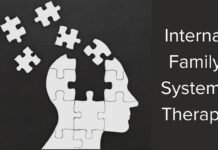Last Updated on March 12, 2024 by admin
Two weeks ago, my wife and I had baby No. 10 at our house. The baby always brings excitement, joy, little sleep and new stress. Most kids are cute and fun. Many people feel different at home. But they also carry big responsibilities and some difficulties. The most common question for a new mother is, “Do you have 10 fingers?” To alleviate this problem, I have compiled a list of 5 things to do to check the feet of a newborn.
1. Most children have flat feet. 97% of newborns have similar eyes. It’s because of the oil on the altar. Over time, this fat is absorbed and the muscles and muscles grow backward. A child with flat feet should not be bothered. Enjoy these beautiful, oily feet.
2. Inner legs. The newborn foot should be very flexible The bones are partially formed and the muscles, stretch, and connections are still developing. Bad position of the foot (bent outwards or inwards), misaligned (narrower than the front of the foot), or broken (social leg) – Warning sign and assessment a. Foot and ankle specialist. Remember, buy the same unique shoes for newborns (or better yet leave without shoes) so that the feet feel soft and supple.
3. Child model. The feet of a newborn baby is usually Pigeon Toed, with a narrow heel and a wide front. It should be easily held in a “V” shape between the thumb and forefinger. This diagnosis allows you to identify a “C” shaped leg because the toes and toes are not straight but curved inward or outward. Due to the elastic nature of the newborn’s feet, the skin can change its shape by touching, pulling, and blowing.
4. Anxiety. In a newborn, the normal reflex is checked for the Metatarsus Adductus treatment. This is achieved by turning the big toe with a rough tool or finger from the bottom of the heel. Adults respond by pointing their fingers downwards. The baby’s reaction is the spread of the finger and the height of the big toe. In this case, search is not the only answer.
5. 10 fingers. This is usually the first thing to check on the foot. Abnormalities can include abnormally large fingers, many fingers, very small fingers, and even the absence of fingers compared to other fingers. Fingerprints can also be seen in this case. Many of these conditions can be treated but not always. The diagnosis should be made by a foot and ankle specialist.
The foot is a very complex sequence of bones, spine, joints and root / nerve tissue. This new baby will last a lifetime and needs to be preserved. The key to foot growth is the ability to constantly grow by stopping clothing or footwear, strengthening the muscles and spread of the foot and moving them regularly. Enjoy your baby’s feet because they are part of your baby’s beauty.
In addition to rotating and aligning the bottom and interior of the clubfoot, movement can break the sole of the foot. There are actually many types of social bases. There are 4 different clubs:
Cognitive: Cognitive clubfoot is a leg that has been associated with bone loss since birth and has nothing to do with any neurological cause or symptom.
Teratological: The legs of the teratological club are associated with neurological disorders such as spine.
Positioning: The base of the local club, of course, is usually the foot, which is placed in a deformed position in the uterus. The original position of the bones is normal, and the foot is usually adjusted by elongation or perhaps rapid throwing.
Syndromic: Syndromic clubfoot are associated with common hereditary problems such as arthroplasty. Like all teratologists, Syndrome Society legs usually require surgical treatment by default, but preparation for surgery helps to disperse the mineral-associated soft cells.
It occurs as soon as the baby is born and is determined by ultrasound before birth. If left untreated, foot injury can make it more difficult and frustrating for a child to walk. Talking to the best pediatric orthopedist can help you find the best treatment plans for patients with social foot. Although surgical treatment has long been considered the most common treatment, very few interventions, such as pony casting or physiotherapy using French practical techniques, are widely used.
What could be more appropriate for a society?
The main reason for the formation of society is still unknown. Many scientists have suggested that the problem is hereditary because it can be found in family members.
Read more: Newborn and Baby Safety at the Best Baby Photography Studio






















